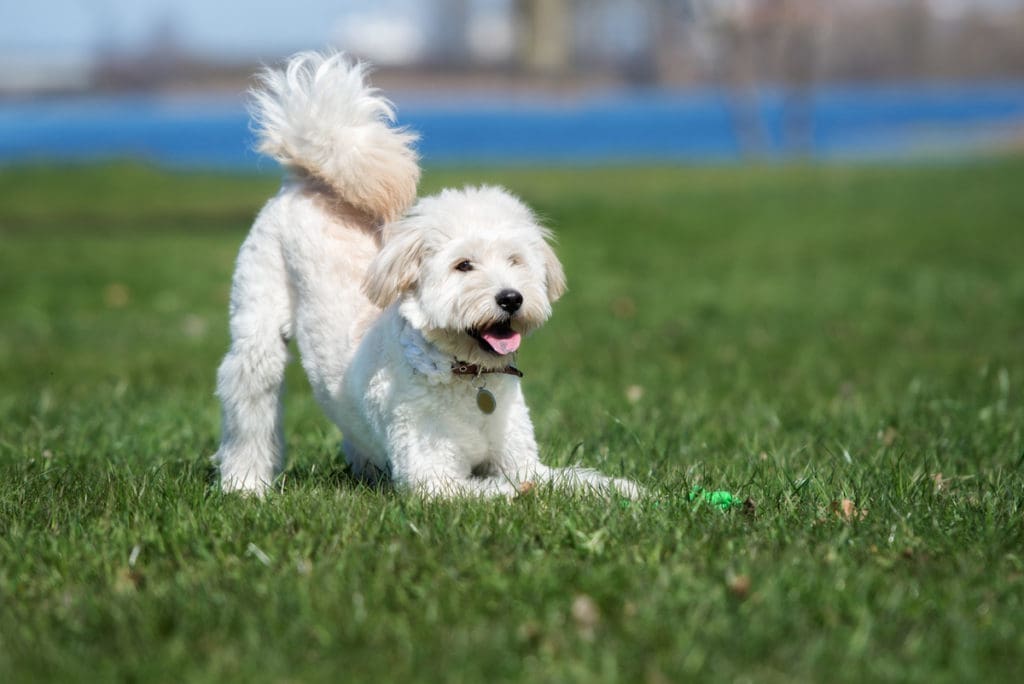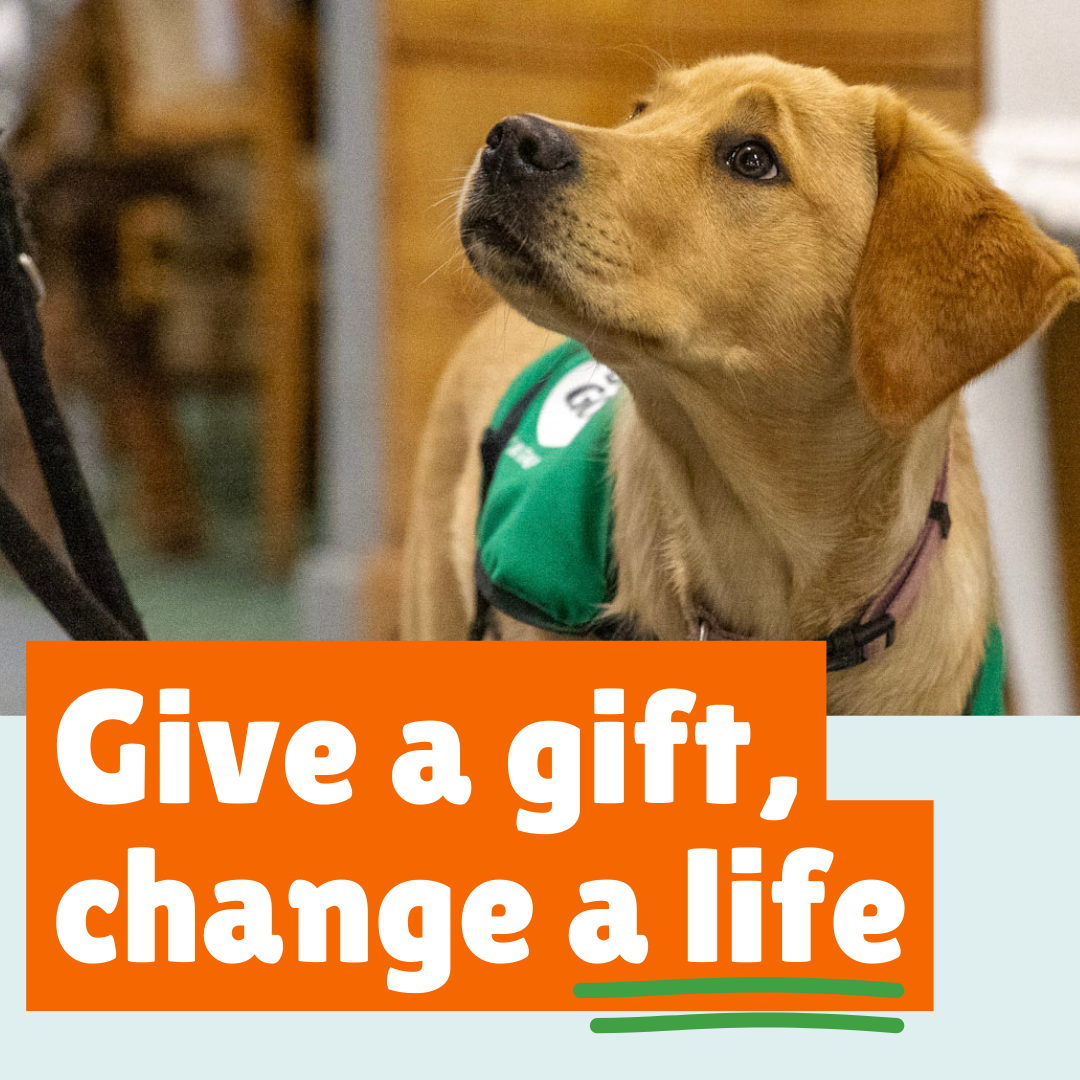Understanding how your dog behaves around other dogs
Dogs are social beings and, with careful introduction and positive experiences, generally enjoy meeting other dogs.
Just like people, different dogs have different characteristics; some are noisy and boisterous, others are shy and retiring but, as well as your dog’s natural personality, there are certain influences that will affect the way they behave. These include your dog’s age, breed/type, temperament, and past experiences. In addition, our dogs quickly pick up on our own mental state and are frequently influenced by our own behaviour.

Fight, Flight, and Freeze
In the wild, when confronted with a situation that causes them concern, dogs will choose between three options – fight, flight, or freeze.
Instinctively, most dogs would not choose to fight because of the risk of injury, and turn to flight if at all possible.
If flight is not an option, your dog may also ‘freeze’, where they become completely still – the hope being that if they do not react, then the stressor will go away.
These instincts govern ‘normal’ behaviour, therefore our dogs must be given the opportunity to get away from any source of perceived threat. In our homes, they should always have a safe place where they can go to get away (having a comfortable crate is a great option). When outside, however, a dog on a lead has very limited options for escape and may find it necessary to communicate their discomfort by send a warning message. As we can see, the role of us as our dog’s support and guide is key to the way that our dog behaves with other dogs.
It is important to note that every dog communicates slightly differently and will rely on an assortment of signals with varying emphasis to communicate. Take time getting to know your dog’s own subtle signals, behaviours, communication style, likes, and dislikes.
It is also crucial that we listen and respond to our dog’s communication. If we ignore their signals, our dogs can learn that the only way to get a response (and to thus escape from the stressor) is to escalate to ‘fight’ behaviour, or a bite, without any warning signs. Listening to and respecting our dog’s voice strengthens the mutual trust required for a life-long, meaningful relationship between us and our companion.
Reward appropriate behaviour
Our dog’s behaviour needs to be appropriate for the environments into which we will take them. This requires us to teach them, with careful guidance and support, what this appropriate behaviour is.
Just like children, dogs need to understand and be comfortable with a variety of situations. For this to occur, we need to be understanding and supportive, helping our dogs to experience and learn about these situations in a safe way.
Teaching our dog what appropriate behaviour is by using rewards will help them to learn, and therefore be more likely to behave in the more appropriate way.
We should never shout at our dogs or punish them. If we are aggressive towards our dogs, this can easily lead to long lasting behavioural problems stemming from their resulting fear, anxiety, and low confidence and trust.
How dogs communicate
In our interactions with other humans, many of us are extremely adept at reading people’s body language (a set of behaviours or non-verbal signs that convey important messages). In the dog’s world, as they rely solely on their body language for communication, they have perfected a range of behaviours that are generally well understood by other dogs. Their facial expressions and body postures can give us, and other dogs, helpful information about their emotional states and moods.
Due to human intervention and breeding, many breeds struggle to convey these messages – those with unnaturally shaped ears, tails, fur length, and so on, means that the vital tools to convey these messages have been removed or greatly altered.
Modern dog breeds are also out-of-touch with the communication skills their ancestors relied upon, which means that many breeds not only don’t understand how to communicate, but also cannot read other dogs’ communication, and will often ignore the all-important body language that conveys the feelings and mood state of the other dog(s). Due to this, it is even more important that we are aware of our dog’s personal communication signs and methods – every dog will communicate differently, so get to know your own dog’s signs.
Greeting behaviour
When dogs meet, there is a social ritual that involves sniffing both the nose and the tail. This is an important part of greeting behaviour as dogs have an amazing sense of smell and through this, they will both gather and convey an enormous amount of information in a short time. This process brings the dogs into very close proximity, and the social exchange involved in recognising facial signs and body postures is as much a protective mechanism for both dogs, as it is an informative one.
When happy, a dog’s tail will be relaxed and swish horizontally. A tail held high and wagging stiffly can signal your dog is uncomfortable. Facial signs with a soft expression, a ‘play’ face and relaxed jaws are friendly and encouraging, but if either dog looks away, sets the ears back, licks their lips and/or shows some avoidance, then this may indicate stress and discomfort in the situation. The initial meeting should take no more than five to ten seconds and is designed to establish a social equilibrium with neither dog being dominant. You may not have noticed before, but both dogs will often size each other up from a distance and may communicate visually as they approached each other. Dogs like to greet each other indirectly, approaching at a gentle angle without any direct face-to-face approach. Allow your dog to do this even when on the lead; a direct approach is very intimidating and can be enough to stress either dog.
People walking their dogs often like to stop and chat, but for two dogs restrained by their leads, this might not be quite as comfortable a situation as it is for us. Our dogs are unlikely to be enjoying the close interaction and will instead be looking to us for support and waiting for us to notice their body language communication. Signs of fear and discomfort include (but are not limited to) licking lips, hiding or other methods of getting away, cowering, unusual amounts of panting, growling, or other warning signs. If you notice any of these, the safest thing is to take a step back and to increase the distance between the two dogs, walk away if possible, or if necessary, distract with high value treats (be mindful not to reward any ‘fight’ responses, but simply distract). A moment’s preventative action can save not just a confrontation, but also a potential negative learning experience that could lead to deep seated and long-term behavioural changes and/or learned responses.
Summary
Good signs:
- Brief, circular greeting
- Horizontal, relaxed and swishy tails
- Play bows, loose bodies, lateral movement
- Role reversal where one dog may be submissive and then, immediately afterwards, they change roles
- Jerky type of interaction with frequent stops and starts
- Physical adjustment from a bigger dog to the level of a smaller or older dog
- Clear bite inhibition during play, without lunging or gripping on with jaws
- Alternating play style to both dogs’ preferences
- Breaking from play to shake-off, then returning to play
Danger/warning signs:
- High arousal
- High tail, tense muscles, standing tall
- Completely straight and still tail
- Hackles (hair along the shoulders and back) raised
- Stillness/’freezing’
- Intense stare and constant focus
- Closed, tight mouth
- Yawning
- Lip licking (of own lips)
- Panting (not caused by exercise)
- Rolling on to the back
- Submissive urination
- Lowering the body close to the ground
- Ears flat back against head
- Baring of teeth or ‘smiling’ (unlike humans, this indicates intense stress – not happiness)
- Growling/snarling/snapping
- Relentless pursuit (including chase) or over-excitedness
- Bullying of small or shy dogs
- Inability to pick up on or respond to other dogs’ communication e.g. not responding to another dog’s growls or reluctance to play
If in any doubt, simply remove your dog from the situation. If possible, walk away from the stressor and/or request the relevant person to put their dog on a lead. Do not place yourself between the two dogs or put your hands or face in their proximity. Even the most mild-tempered dog can bite if they are intensely stressed or feel the need to defend themselves.
Remember that these signs can be coming from both, your dog and someone else’s dog so, if you see any of these warning signs, you must remove your dog straight away. The law about dogs is complex but your dog can be perceived as being dangerous simply by any uncontrolled behaviour that causes concern to another dog or people. (see Living with a dog for the first time)
Help support our life-changing work...
Imagine if everyday tasks were so challenging or physically demanding they affected your quality of life. For many people living with a disability of families with a child with autism, that is their reality. Now imagine if a specially trained four-legged friend could restore your, or your family’s, independence.
The demand for our services is high and we can’t help as many people as we would like to without more funding. Please help us continue to bring people and dogs together to help make everyday life possible in so many extraordinary ways.
Every contribution, whatever size, is important and helps us make a difference.


